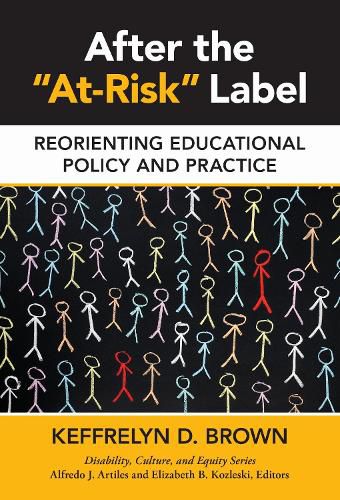Readings Newsletter
Become a Readings Member to make your shopping experience even easier.
Sign in or sign up for free!
You’re not far away from qualifying for FREE standard shipping within Australia
You’ve qualified for FREE standard shipping within Australia
The cart is loading…






This book examines how the use of the atrisk category and label creates problems for students and teachers.
Drawing from research across various education sites, the author illustrates how educators recognize the label’s potential to redress issues of equity, but warns that it can also stigmatize the students so labeled. She explores how the labeling and subsequent practices by teachers and schools actually affect students, such as classifying many individuals as deficient. The text provides a historical overview, discusses the role of federal education policy and teaching, and includes tools to help readers acquire more complex, critical understandings of risk in education practice.
After the At-Risk Label not only challenges the education community to reorient itself to a more equitable discourse, it provides a framework for changing the structural conditions of schooling to better serve all students.
Book Features:
Offers a critical appraisal of how schools, policy, and teachers may be complicit in exacerbating conditions that lead to risk.
Shows how race and class biases might be manifested in the at risk identification process.
Outlines a framework for making sense of, and acting in response to, risk that attends to both the individual and the institutional.
Provides a set of key questions, terms, and a list of extended activities in each chapter.
$9.00 standard shipping within Australia
FREE standard shipping within Australia for orders over $100.00
Express & International shipping calculated at checkout
This book examines how the use of the atrisk category and label creates problems for students and teachers.
Drawing from research across various education sites, the author illustrates how educators recognize the label’s potential to redress issues of equity, but warns that it can also stigmatize the students so labeled. She explores how the labeling and subsequent practices by teachers and schools actually affect students, such as classifying many individuals as deficient. The text provides a historical overview, discusses the role of federal education policy and teaching, and includes tools to help readers acquire more complex, critical understandings of risk in education practice.
After the At-Risk Label not only challenges the education community to reorient itself to a more equitable discourse, it provides a framework for changing the structural conditions of schooling to better serve all students.
Book Features:
Offers a critical appraisal of how schools, policy, and teachers may be complicit in exacerbating conditions that lead to risk.
Shows how race and class biases might be manifested in the at risk identification process.
Outlines a framework for making sense of, and acting in response to, risk that attends to both the individual and the institutional.
Provides a set of key questions, terms, and a list of extended activities in each chapter.